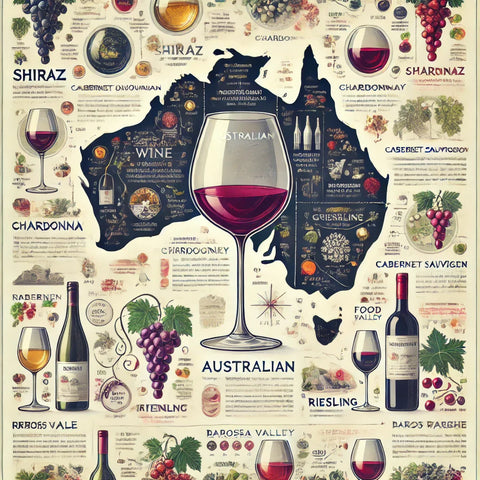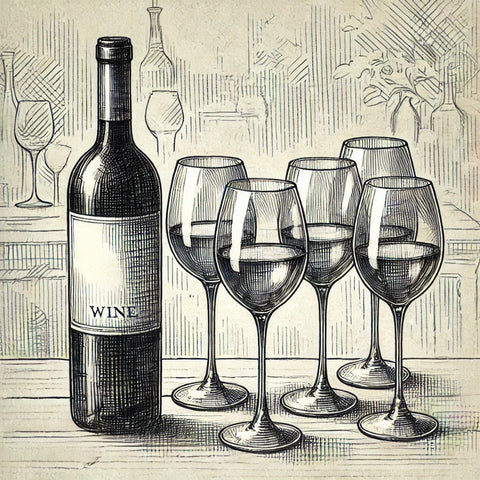Wine and Food Pairing: The Complete Guide to Perfect Matches
Understanding how to pair wine with food transforms both dining and drinking experiences. While some view wine and food matching as complex or intimidating, it follows basic principles that anyone can learn and apply. This comprehensive guide explores both the fundamental rules and the creative possibilities of wine and food pairing.
Understanding Basic Principles
The foundation of successful wine and food pairing lies in understanding how different elements interact. When we pair wine with food, we're essentially balancing several key components that can either complement or contrast with each other.
The primary elements we consider include:
Weight and Body: The intensity of both wine and food should match. Just as we wouldn't serve a delicate fish with a heavy gravy, we shouldn't pair a light-bodied wine with robust dishes. The weight of both elements should be in harmony. For example, a full-bodied Barossa Shiraz pairs beautifully with a hearty beef dish, while a light Pinot Grigio complements delicate seafood.
Acidity: Wine's natural acidity plays a crucial role in food pairing. High-acid wines can cut through rich, fatty dishes and refresh the palate. Consider how a Clare Valley Riesling's crisp acidity perfectly balances rich seafood dishes, or how a Sauvignon Blanc's brightness complements goat cheese.
Tannins: These structural elements in red wine interact significantly with food, particularly proteins. Understanding tannin levels helps create successful pairings:
- High-tannin wines need protein-rich foods
- Fatty foods soften tannin impression
- Salty foods can enhance tannin perception
- Fish oils can clash with high tannins
Classic Australian Pairings
Our unique food culture has created distinctive local pairings that showcase both wine and cuisine at their best:
Seafood Matches:
- Sydney Rock Oysters with Hunter Valley Semillon
- Barramundi with Adelaide Hills Chardonnay
- Prawns with Clare Valley Riesling
- Grilled octopus with Provence-style rosé
- Fish and chips with Margaret River Sauvignon Blanc
Meat Pairings:
- Lamb cutlets with McLaren Vale Shiraz
- Beef pies with Coonawarra Cabernet
- Duck with Yarra Valley Pinot Noir
- Kangaroo with Barossa GSM blend
- Pork belly with Adelaide Hills Gruner Veltliner
Regional Specialties
Different wine regions have developed food cultures that naturally complement their wines:
McLaren Vale:
- Mediterranean cuisine with Grenache
- Pizza and pasta with Sangiovese
- Local seafood with Fiano
- Cheese plates with fortified wines
- Modern Australian with Shiraz
Barossa Valley:
- German influences with Riesling
- Charcuterie with GSM blends
- Rich meat dishes with Shiraz
- Local produce with Semillon
- Traditional foods with fortified wines
Understanding Wine Components
To create successful pairings, we need to understand how different wine components interact with food:
Sweetness:
- Balances spicy foods
- Contrasts salty flavours
- Complements sweet dishes
- Cuts through richness
- Softens heat
Alcohol:
- Enhances spice perception
- Provides body and weight
- Affects food flavours
- Influences pairing choices
- Impacts palate weight
Advanced Pairing Concepts
Moving beyond basics allows for more creative and complex pairings:
Bridge Ingredients: Using ingredients that connect wine and food:
- Herbs that echo wine aromatics
- Sauces that bridge flavours
- Cooking methods that complement
- Seasoning that enhances
- Garnishes that connect
Seasonal Considerations: Adapting pairings to weather:
- Summer: lighter wines and foods
- Winter: heartier combinations
- Spring: fresh, aromatic matches
- Autumn: transitional pairings
- Special occasions
Problem-Solving Difficult Pairings
Some foods present particular challenges for wine pairing. Here's how to handle them:
Challenging Ingredients:
- Artichokes: Try Vermentino
- Asparagus: Match with Gruner Veltliner
- Eggs: Consider sparkling wine
- Chilli: Choose off-dry whites
- Vinaigrettes: Select high-acid wines
Professional Tips
Insights from sommelier experience:
Temperature Considerations:
- Serve wines at proper temperature
- Consider food temperature
- Account for ambient conditions
- Adjust for seasonal factors
- Think about service timing
Glassware Selection:
- Choose appropriate shapes
- Consider wine style
- Match to occasion
- Think about practicality
- Maintain proper service
Visit Our Cellar Door
At McLaren Vale Cellars, we offer:
- Guided pairing experiences
- Food and wine masterclasses
- Regional matching insights
- Professional advice
- Educational tastings
Understanding wine and food pairing enhances both dining and drinking experiences. While rules provide useful guidelines, personal preference remains important. The best pairing is ultimately the one you enjoy most.




Comments (0)
There are no comments for this article. Be the first one to leave a message!